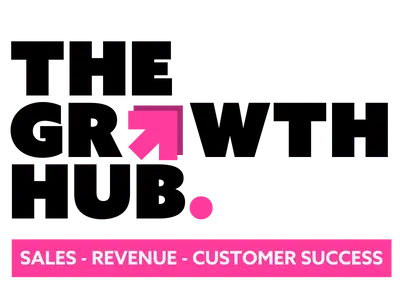Sales Enablement is undergoing a transformation in the Sales world. Its future is being debated. Its foundations are being questioned. And it’s all because of Revenue Enablement – a more holistic approach that isn’t just for salespeople, it’s for everyone involved in a customer-facing role.
The problem with Sales Enablement is businesses struggle to implement an Enablement strategy and then measure its success. So, Revenue Enablement is an alternative to empower a wider range of roles in the business to help improve every single customer interaction.
But is Revenue Enablement better than Sales Enablement? And is Sales Enablement still a good investment?
Why Sales Enablement has stalled
The growth of businesses adopting Sales Enablement has stalled. The reality is that most current approaches and frameworks don’t work – either they are too complicated or they don’t have full buy-in. Additionally, many Sales Enablement plans don’t get viewed as a strategic must-have, particularly with Directors.
So while Sales Enablement isn’t necessarily a bad investment, it hasn’t worked for a lot of businesses. However, many still believe Sales Enablement is all they need. But when does Sales Enablement actually work? Sales Enablement works best when it has buy-in from the top. Additionally, there needs to be data behind it, as well as a defined process and strong execution. Essentially, not enough businesses are actually doing it well. That doesn’t mean it’s a dying breed. But that is where Revenue Enablement comes in.
The introduction of Revenue Enablement
Revenue Enablement became a mainstream term following research in 2019 by SiriusDecisions. It goes beyond Sales Enablement, and encompasses every touchpoint in the business, spanning job roles beyond Sales. For instance, Customer Service and Support are critical to successful Revenue Enablement.
Revenue Enablement is an evolving concept. It’s still relatively new and, like Sales Enablement, can appear difficult to start and complicated. But let’s look at Revenue Enablement v Sales Enablement.
What is the definition of Sales Enablement: “Sales enablement is the strategy and processes for helping sales teams efficiently move customers through the sales process to the point where the customer can make a purchasing decision with a higher likelihood of buying their solution.”
What is the definition of Revenue Enablement: “Revenue Enablement is the process by which you most efficiently acquire and maintain customers, maximizing revenue gained through each stage of a customer’s journey with your organization.”
Sales Enablement is clearly more geared towards Sales teams. It’s designed to support the Sales team by aligning Marketing and Sales together. The fundamental difference is Revenue Enablement is geared towards customers. Customers are at the heart of every decision and activity. It’s about generating more revenue by improving overall customer satisfaction – a longer-term, but arguably more rewarding initiative.
While Sales Enablement covers the period between becoming a lead and a sales qualified lead or opportunity, all the way through to the end purchase, Revenue Enablement covers the full customer lifecycle. Moving from enabling salespeople to sell more, to improving the customer journey in a bid to reduce churn. However, successful Revenue Enablement still needs good Sales Enablement. It’s just a single piece of the puzzle rather than the full thing.
What does this mean for Sales teams?
Sales Enablement is a simpler proposition for Sales teams. They get help to sell more. So what does Revenue Enablement mean for them, and the other parties involved?
Whereas Sales Enablement is about the creation, curation and execution of relevant content to the Sales team to help close, onboard and coach deals, Revenue Enablement carries these activities on but at a broader scale – Marketing, Customer Service, Finance and Product need to be involved. It’s all about delivering a better service to customers to improve the overall customer experience – whether that means more coaching or more training. All touchpoints with a customer, regardless of the team they are in, should be optimised to improve that experience. And that is the true process of Revenue Enablement.
So, for Sales teams, little really changes. But for the wider business and other parties involved in speaking with customers, there needs to be a great alignment on the goal of delivering excellent customer experiences. Sales teams must adapt to deliver this as well. The sale is no longer ‘over’ once the deal has closed. The salesperson who closes it must also take an active approach in the ongoing lifecycle of the customer.




